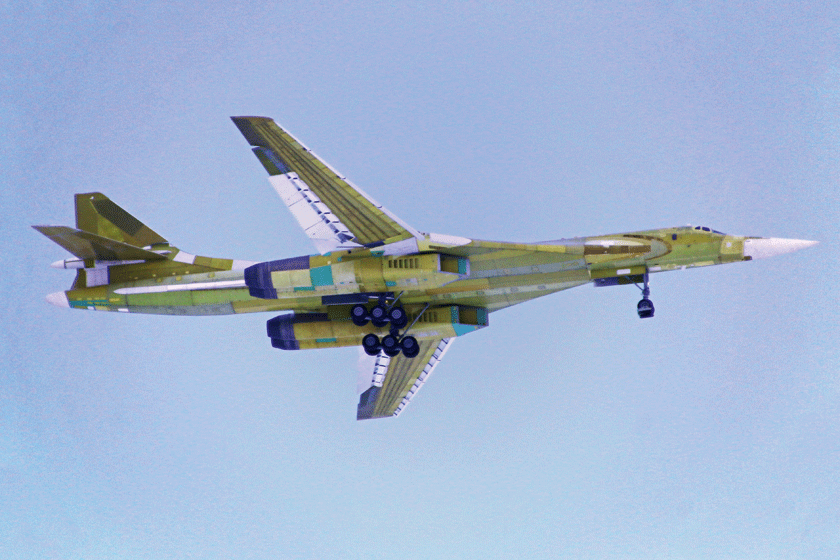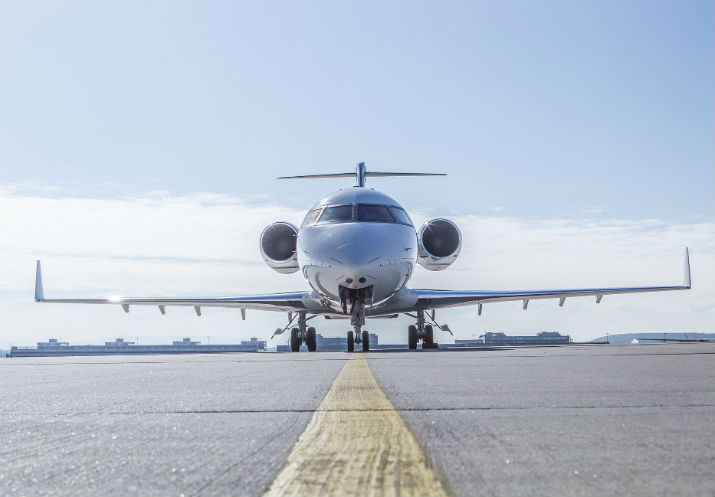
New products of the end of 2021 in Russian aviation

The first Tu-160 strategic bomber built after a long break took off for the first flight on January 12, 2022 from the airfield of the Kazan plant. He spent half an hour in the air.
The end of each year is a time to hurry up with plans. There is always a lot going on in the Russian Federation in the last weeks of the year, and 2021, despite the COVID-19 pandemic, is no exception. Several important events have been postponed to the beginning of this year.
The first new Tu-160
The most important and long-awaited event - the first flight of the first Tu-160 strategic bomber, restored after many years of inactivity - took place in the new year, on January 12, 2022. The Tu-160M, still unpainted, took off from the airfield of the Kazan plant and spent half an hour in the air at an altitude of 600 m. The aircraft did not retract the landing gear and did not fold the wing. At the helm was a crew of four under the command of Viktor Minashkin, Tupolev's chief test pilot. The fundamental significance of today's event is that the new aircraft is being built completely from scratch - this is how Yury Slyusar, General Director of the United Aviation Corporation (UAC), assessed the importance of this flight. The Russians were going to be in time with the new Tu-160M for the anniversary - December 18, 2021 marks 40 years since the first flight of the Tu-160 in 1981; It failed, but the skid was still small.
True, it is not entirely accurate whether a partially finished airframe was used in the production of this aircraft. Serial production of the Tu-160 was carried out in Kazan in 1984-1994; later, four more unfinished airframes remained at the factory. Three of these were completed, one each in 1999, 2007 and 2017, with another still in place. Formally, the new production aircraft have the designation Tu-160M2 (product 70M2), in contrast to the Tu-160M (product 70M), which are modernized operational aircraft, but in press releases, the UAC uses the designation Tu-160M for all of them.

The resumption of Tu-160 production required the reconstruction of many lost technologies, including the production of large titanium panels, durable wing warping mechanisms and engines.
Since the Russians prioritize their nuclear strategic forces, the Tu-160M, both new production and modernization of existing general purpose aircraft, is the most important military aviation program currently underway. On December 28, 2015, the Ministry of Industry and Trade of Russia agreed to resume production of the Tu-160 with the construction of the first experimental Tu-160M2, just the one that has now taken off. Yuri Slyusar then called the resumption of production of the Tu-160 a gigantic project, unprecedented in the post-Soviet history of our aviation industry. The resumption of production required the reconstruction of the production equipment of the Kazan plant and the training of personnel - people who remember the release of the Tu-160 are already retired. The Samara enterprise Kuznetsov resumed the production of bypass turbojet engines NK-32 in a modernized version of the NK-32-02 (or NK-32 series 02), Aerosila resumed the production of the Tu-160 wing warp mechanism, and Gidromash - the running gear. The aircraft is to receive completely new equipment, including a radar station and cockpit, as well as a new self-defense system and weapons, including a Ch-BD ultra-long-range cruise missile.
On January 25, 2018, in Kazan, in the presence of Vladimir Putin, the Russian Ministry of Defense placed an order for the first 10 serial new Tu-160M2 bombers worth 15 billion rubles (approximately 270 million US dollars) each. At the same time, the Kazan plant is upgrading existing bombers to the Tu-160M with exactly the same equipment as the new production aircraft. The first modernized Tu-160M bomber (tail number 14, registration RF-94103, proper name Igor Sikorsky) took off on February 2, 2020.
Rental Volunteer S-70
Two weeks before the new year, on December 14, 2021, the first S-70 unmanned attack aircraft was withdrawn from the production workshop of the NAZ plant in Novosibirsk. It was a modest holiday; the tractor pulled the still unpainted plane out of the hall and drove it back. Only a few invited guests attended, including Deputy Defense Minister Aleksey Krivorukhko, Supreme Commander of the Aerospace Forces (VKS) General Sergei Surovikin, KLA Director General Yuri Slyusar, and S-70 Program Manager Sergei Bibikov.
Since August 3, 2019, the S-70B-1 equipment demonstrator with tail number 071, created as part of the Okhotnik-B R&D program launched in 2011, has been undergoing flight tests. -B, December 27, 2019. The Ministry of Defense of the Russian Federation has concluded another program called Okhotnik-1, under which the SK-70 unmanned aerial system with the S-70 aircraft and the NPU-70 ground control center is being developed. The contract provides for the construction of three experimental S-70 aircraft, the first of which was presented only in December. Completion of state tests and readiness for launch into mass production is scheduled for October 30, 2025.
The most important innovation of the S-70 over the S-70B-1 demonstrator is the flat engine exhaust nozzle, which leaves a smaller thermal footprint; before that, a temporary 117BD engine with a conventional round nozzle was installed on the airframe. In addition, the shape of the chassis covers is different; radio antennas and other details have changed a bit. Probably the S-70 will receive at least some task systems, for example, a radar, which is not on the S-70B.
The dry S-70 "Okhotnik" is a heavy flying wing weighing about 20 tons with one gas turbine jet engine and carrying weapons in two internal bomb bays. The equipment and stock of weapons on board the Volunteer testify that this is not a “loyal wing”, but an independent combat aircraft designed to operate in a single information field with other aircraft, manned and unmanned, corresponding to the concept of the American Skyborg. system first tested in flight on April 29, 2021. For the future of the Volunteer, the development of "artificial intelligence"-based equipment that gives the aircraft a high degree of autonomy, including the ability to assess the tactical situation and make autonomous computer decisions to use weapons, will be crucial. Artificial intelligence is a topic that Russian research institutes and companies have recently taken seriously.
The Russians have announced that the Okhotnik will be produced in large batches at the Novosibirsk Aviation Plant (NAZ), owned by the Sukhoi concern, which also produces Su-34 fighter-bombers. An order for the first batch of production S-70 aircraft has been announced for the Army Exhibition in August 2022.
By the way, in December 2021, the Russian Ministry of Defense released a video showing an S-70B-1 dropping a bomb. The film likely refers to January 2021, when Volunteer was reported to have dropped a 500 kg bomb from an internal chamber at the Ashuluk training ground. This was only a test of the release of cargo from the bomb bay and its separation from the aircraft, since the S-70B-1 demonstrator does not have any guidance devices. The video shows that the weapons bay covers were removed before the flight.

